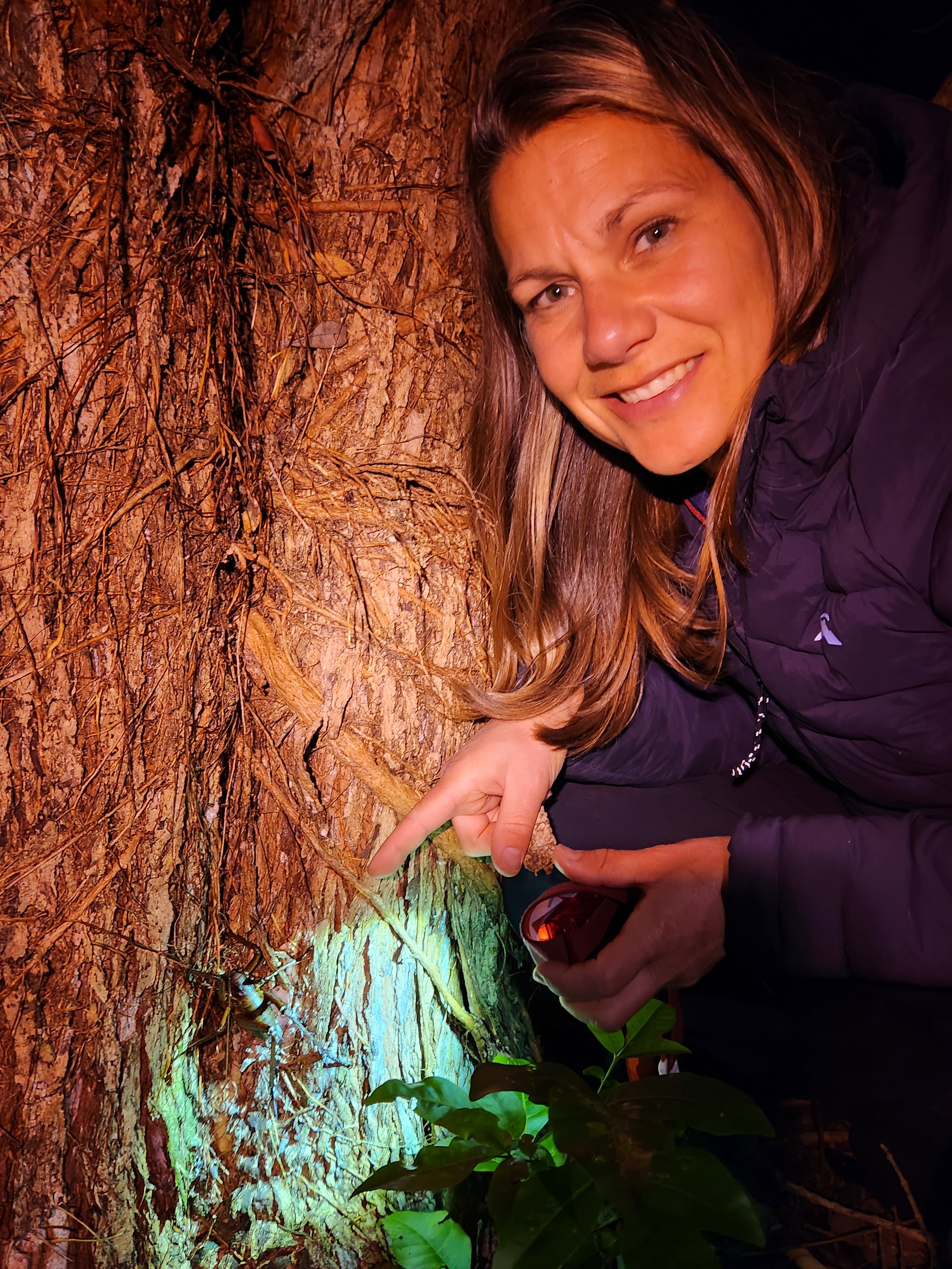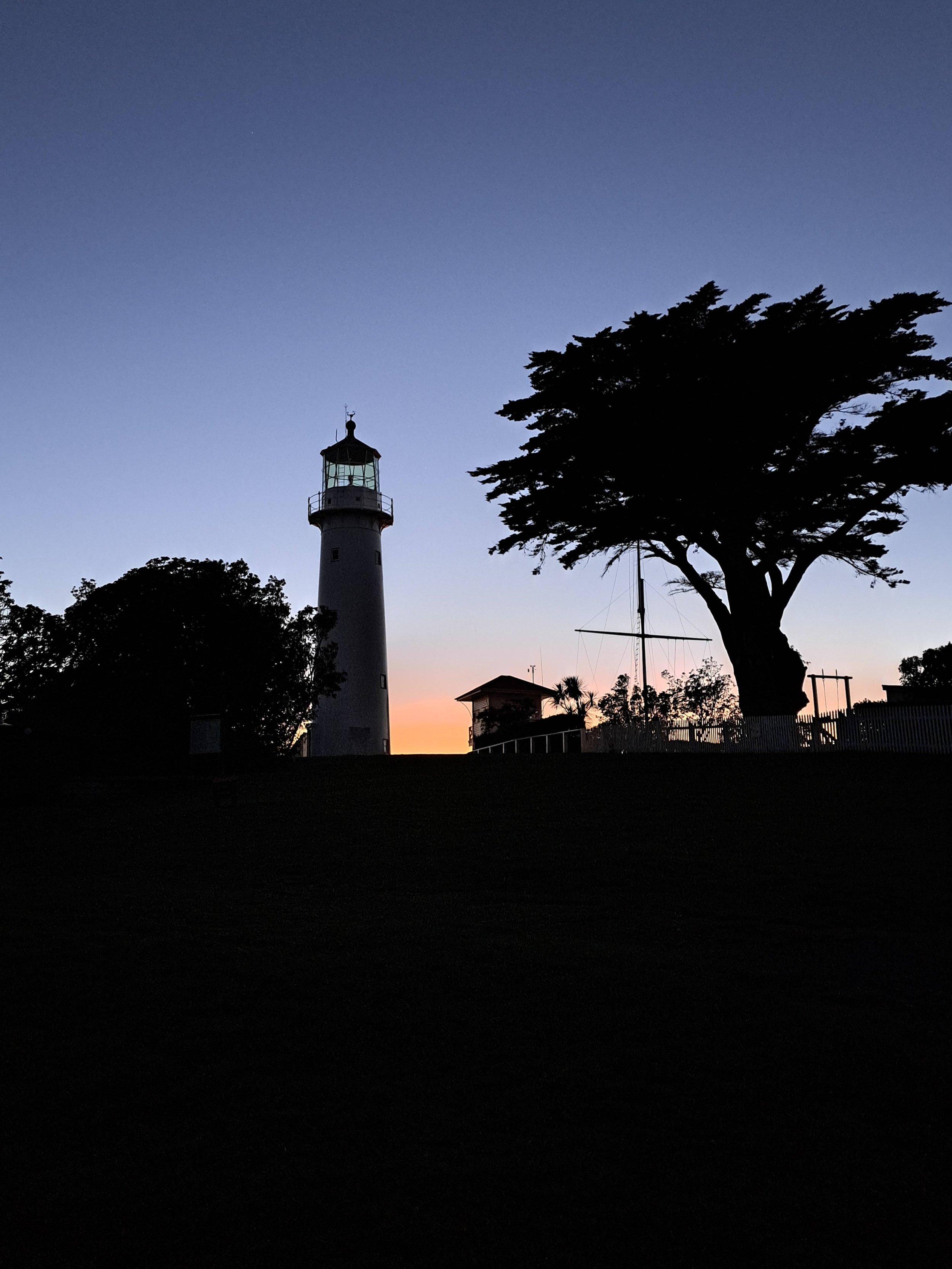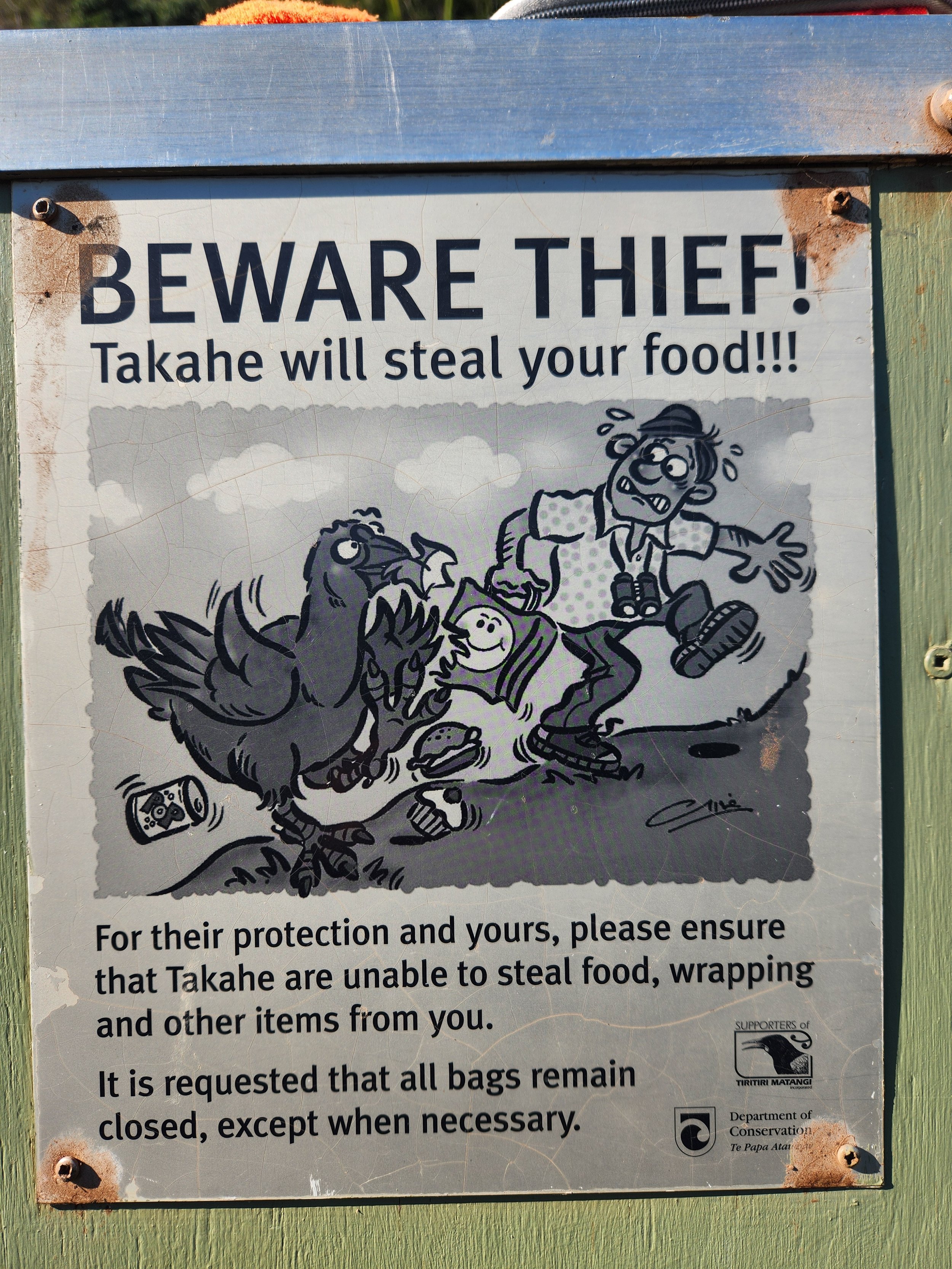Islands and Craters of the North Shore Field Trip
Islands and Craters of the North Shore tiritirimatangi
written by Lesley Mochan
may 2024
The idea of an overnight field trip to Tiritiri Matangi sanctuary near Auckland had been on my wish list for some time. An opportunity arose to book the Island bunkhouse for a weekend in May 2024, but it needed to be a Friday night as all the Saturday spots had been booked prior. However, we had the bonus of having the DOC bunkhouse bunk rooms all to ourselves!
Fifteen members made their way to Auckland to meet at the Gulf Harbour ferry terminal for the 10.00 am Friday crossing, carrying overnight gear and plenty of food in case the weather turned to custard. Prior to the ferry arriving, we were warmly welcomed by Gail Reichert, the Volunteer and Guide Manager for the Island. The Supporters of Tiritiri Matangi Inc (SoTM) community group is one of the largest conservation groups in New Zealand with a range of activities that focus on nature and cultural conservation, research, education, and participation. This group was instrumental in ensuring that the Island was developed as an open sanctuary, allowing public access. The Island is managed by DOC in conjunction with SoTM, Iwi and other stakeholders.
Upon arriving at the Island wharf, the resident DOC rangers gave a brief overview of the Island features, but more importantly, the biosecurity aspects as Tiritiri Matangi has no introduced pests. Our luggage was loaded into the ute for transport up to the bunkhouse and we were instructed to meet at the bunkhouse by 1 pm for the bunkhouse briefing.
The group then split into two smaller groups, with one group taking the Wattle track guided walk, and our group following the Moana Rua route (Coast to Coast) with guides Bethany and Jane. Both our guides were super informative, passionate and funny, and they treated us to two hours of Island snippets, fascinating facts, and stunning views as we made our way to the lighthouse/visitors’ centre. Some of the more memorable particulars included:
History and location of the Pa sites and Kūmara pits
The vision and Mahi of Ray and Barbara Walter, the last lighthouse keepers, and first island rangers
Planting of over 280,000 trees, with many of the plants being propagated on the Island
The successful translocation of many rarer native bird species, tuatara, wētāpunga/ giant wētā but no success in reintroducing the Miromiro/tomtit
The sneaky rat (found and extinguished)
Lighthouse
Weta
On arriving at the bunkhouse, we were given a chance to sort out our bunks and kitchen area before Ranger Keith completed the bunkhouse induction and shared key information on where and when were the best bird-watching opportunities.
The group had the afternoon free to explore the Island and choices included exploring the tracks, visiting the feeding stations, watching the antics of the resident birds in the water baths, learning about the Island's history in the visitor’s centre, and shopping/supporting the gift shop. One aspect that everyone found challenging was the biting cold wind which made puffa jackets and beanies very welcome.
On returning to the bunkhouse, everyone had stories to share of magical moments they had experienced that afternoon. After relaxed pre-dinner snacking, and dinner proper, the light began to fade. For our night excursion, warm clothes and head torches wrapped with red cellophane were a must. We formed small groups and wandered out into the darkness to experience Island life after dusk. Some groups were gone for an hour or so, others 2-3 hours. The highlight for me was not only hearing a kiwi pukupuku/ little spotted kiwi call but having one wander out of the flax beside me, get the fright of its life, and high tail back into the bush. For others, it was the wonder of finding the wētāpunga/giant wētā and an array of iridescent spiders and fungi.
Before daylight Saturday morning most bunks had emptied as the team headed out to listen to the dawn chorus. Unfortunately, this was not a happening thing and even the call of the kōkako was disappointing. Apparently, the younger birds had not yet developed the unique song and were trying to mimic the other birds around them. However, on returning to the bunkhouse a couple of resident takahē were ambling along unaware that later that day they would be snaffled as part of their health checks.
The day turned out to be a stunner with lots of sun and no wind. After a quick but thorough clean-up of the bunkroom, we departed on our mid-morning activity. Our group opted for the longer East Coast track which presented plenty of climbs, and stunning views of the Coromandel and Great Barrier Island. Much to our delight the adult kōkako greeted us in full song in the puriri’s and were close enough to get good photos. After a morning snack on the beach at Fishermans Bay, we continued following the coastal track right out to Northeast Bay, then back along the Ngāti Paoa track and Ridge Road where we came across many of the day trippers who were enjoying the antics of the pīwakawaka/fantails as much as we were. There was certainly no doubt of the location of the nectar feeders as the korimako/bell bird and tūī song was deafening.
There was no trouble filling in the day before our departure from the Island at 4.00pm. It was a little sad to be leaving this magical place. However there was plenty of conversation on the ferry as small groups shared the delightful experiences they had encountered in the last 48 hours and the vast array of bird species we had seen. We said goodbye to a few of our team and most of the group made their way to the overnight stay in Takapuna. We met for dinner at a local restaurant and were joined by Karen Grimwade who had organised our Sunday activity at Tuff Crater.













Another sunny day greeted us on Sunday morning. Our guide, Richard Hursthouse from the North Shore Forest and Bird met us at one of the entry points to the walkway. The site was formed by an eruption about 200,000 years ago. Richard had been actively involved in this restoration project of the area surrounding an extinct volcano in Northcote, Auckland. We heard about the immense effort to remove invasive weed species which included abseiling down the steep banks and slogging through the wetland by a dedicated team of volunteers. Predator control has also been undertaken, and walkways established to allow access around the mangrove-filled marsh crater. The walkway and viewing platforms provide great views of the crater, Waitemata Harbour, and Auckland City. It certainly is a credit to this Forest and Bird branch and hard to believe that it was extensively modified during World War 2 as a fuel tank depository (and known as Tank Farm). It is definitely worth a visit if you are in the area. Click here for more information.
Richard seemed to enjoy the time with our group and it was inspiring to hear about other conservation projects he had been involved with. He recommended a couple of other sites to visit close by and a few of us ventured up to the Kauri Glen tree tops walkway that had just been opened. Unfortunately, most of Auckland seemed to have the same idea so it wasn’t the lovely nature experience that we had expected. The walkway and kauri trees were certainly impressive though. An appropriate end to the Auckland field trip!




























